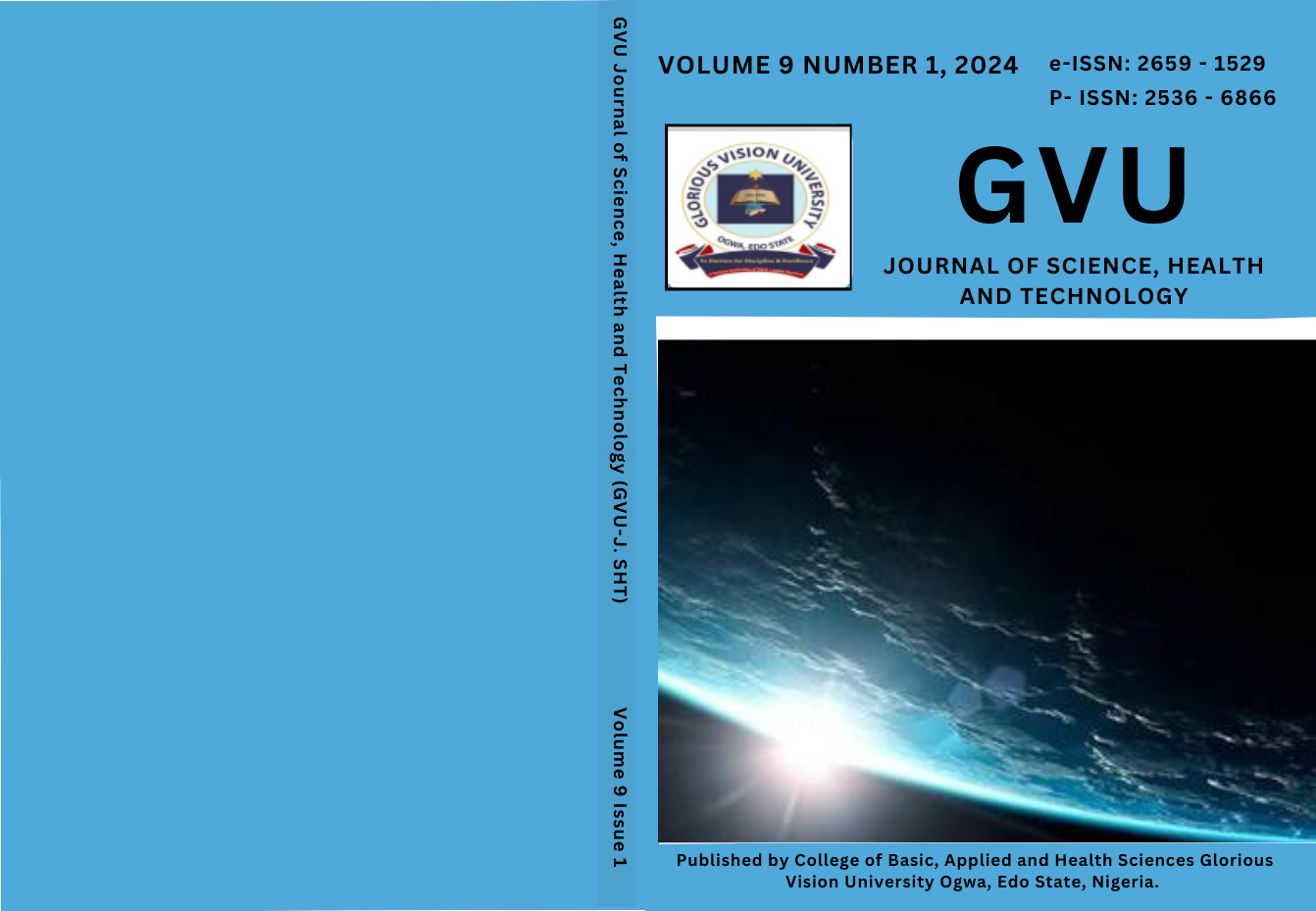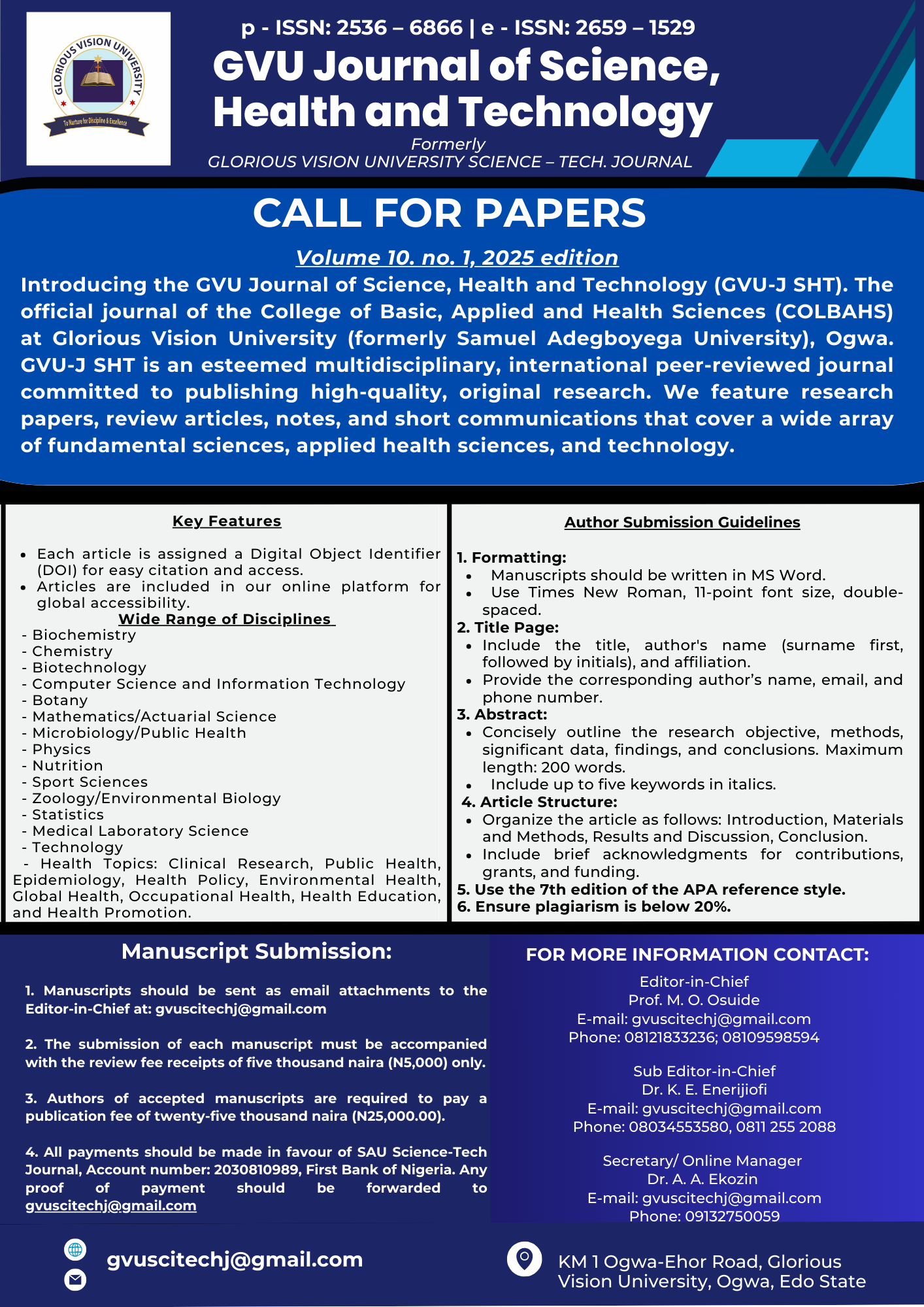Green Synthesized Iron Nanoparticles Using Gongronema latifolium Leaf Extract: Characterization, Antioxidant, and Antidiabetic Activities
DOI:
https://doi.org/10.5281/zenodo.13296786Keywords:
Nanotechnology, Green nanoparticle, , Antioxidant, Anti-diabetic, Gongronema latifoliumAbstract
Green nanoparticles are derived from natural sources possessing unique properties for biomedical applications. Inhibition of key enzymes (α-amylase and α-glucosidase) involved in the digestion of starch and protection against free radicals and lipid peroxidation could be part of the therapeutic approach towards the management of hyperglycemia. The study was carried out to synthesize and characterize Iron Oxide nanoparticles coated with ethanolic leaf extracts of Gongronema latifolium (Gl-FeONPs) using highly advanced techniques for its use as antioxidant and antidiabetic. The study compared the in vitro antioxidant capacities of ethanolic leaf extracts of Gongronema latifolium (Et-Gl), iron oxide nanoparticles (FeONPs), and Gl-FeONPs by evaluating the Metal Chelating Activity (MCA), Nitric Oxide Scavenging Activity (NOSA), Ferric Reducing Ability Power (FRAP), and Lipid Peroxidation (LPO). The in vitro anti-diabetic capacities were determined against α-amylase and α-glucosidase. Results showed that Et-Gl and Gl-FeONPs displayed MCA (IC50 = 29.48 - 14.77 µg/mL), NOSA (IC50 = 2.157 - 1.480 µg/mL), FRAP (IC50 = 10.658 - 4.352 µg/mL), LPO (14.17 – 94.38%), α-amylase (IC50 = 2.81 - 4.83 mg/mL), and α-glucosidase (IC50 = 2.02 – 3.52 mg/mL). Overall, Gl-FeONPs indicated the potential to prevent postprandial hyperglycemia by slowing down carbohydrate hydrolysis and oxidative stress.




